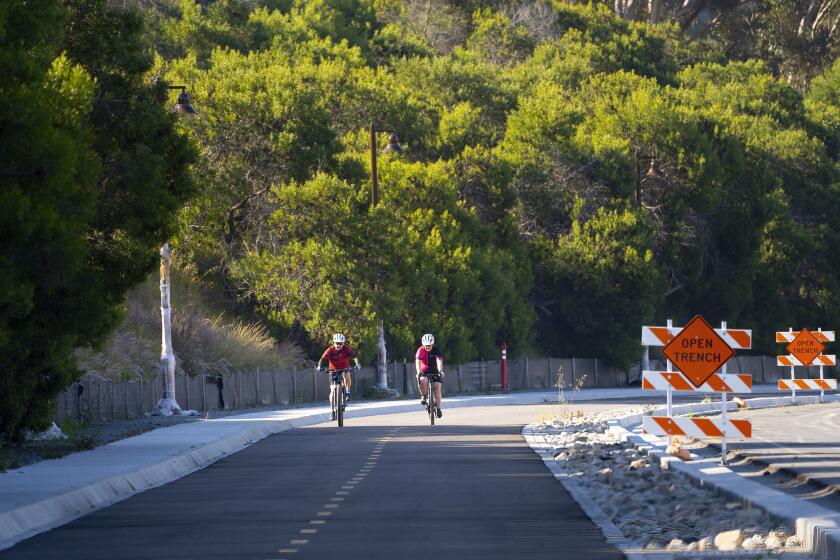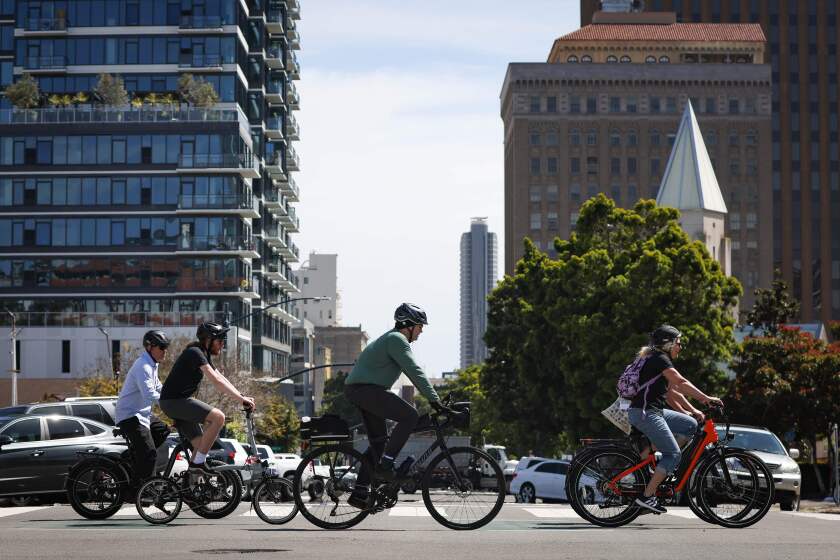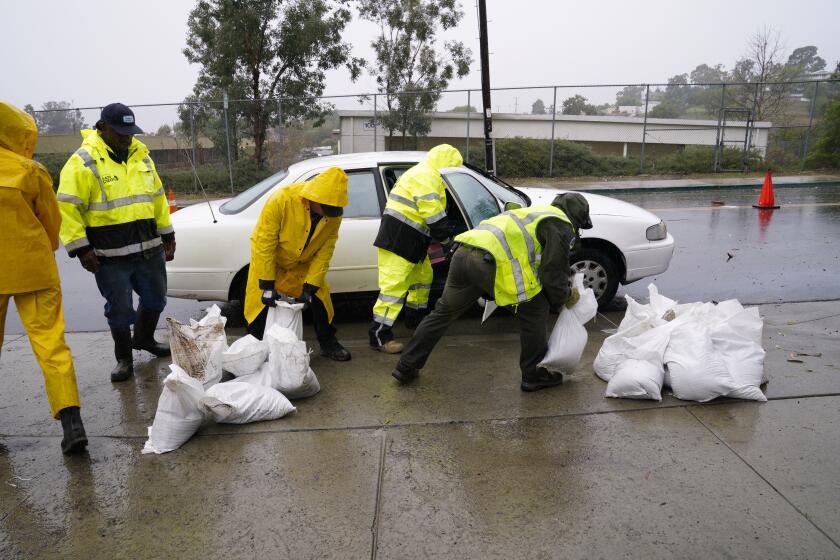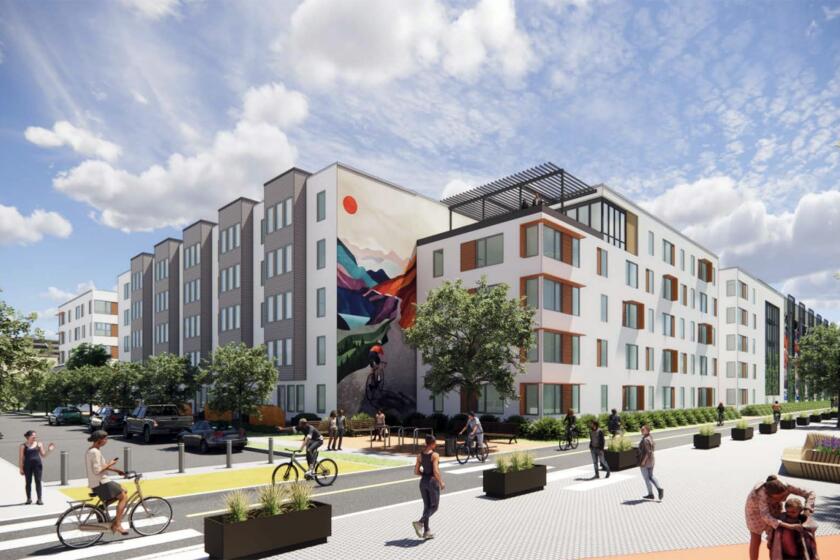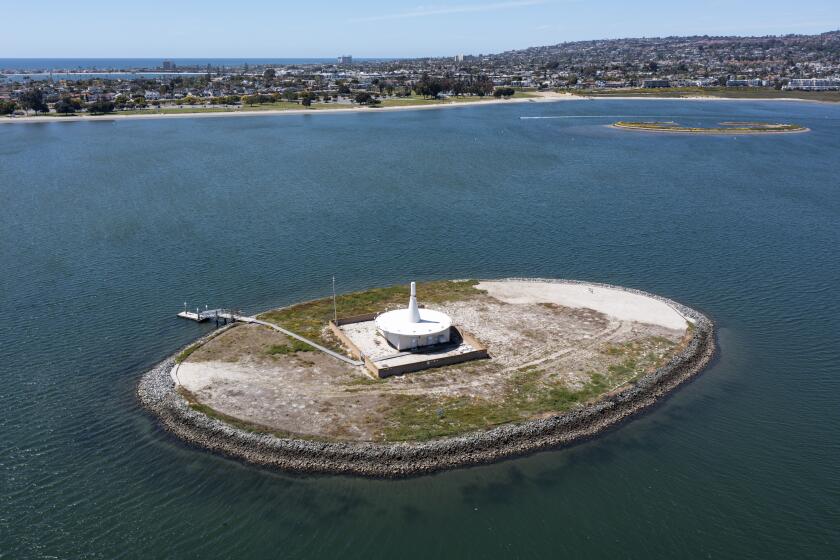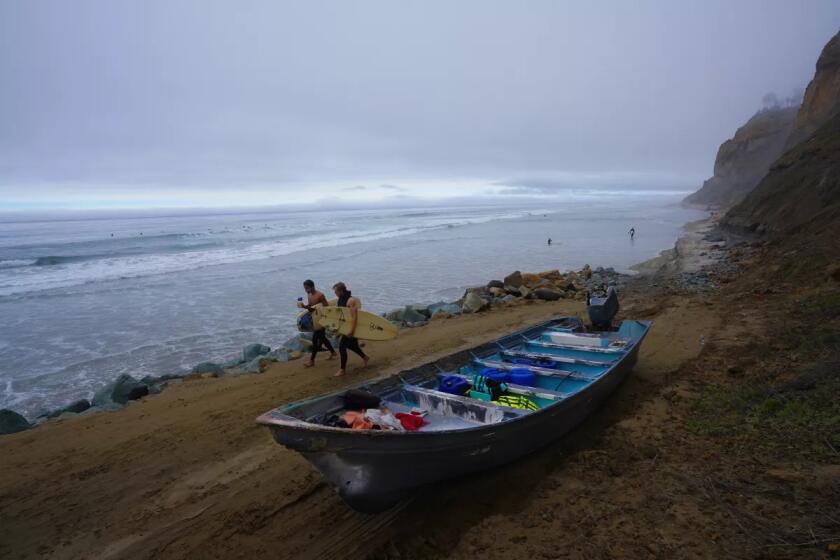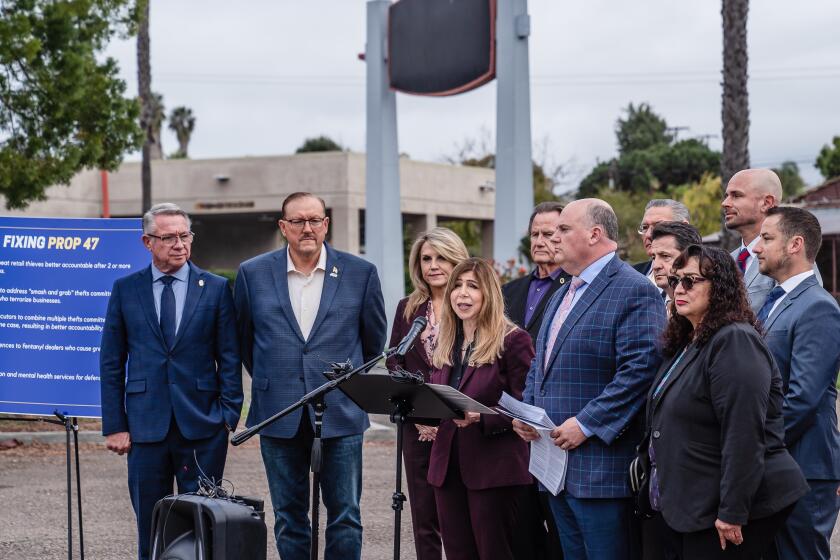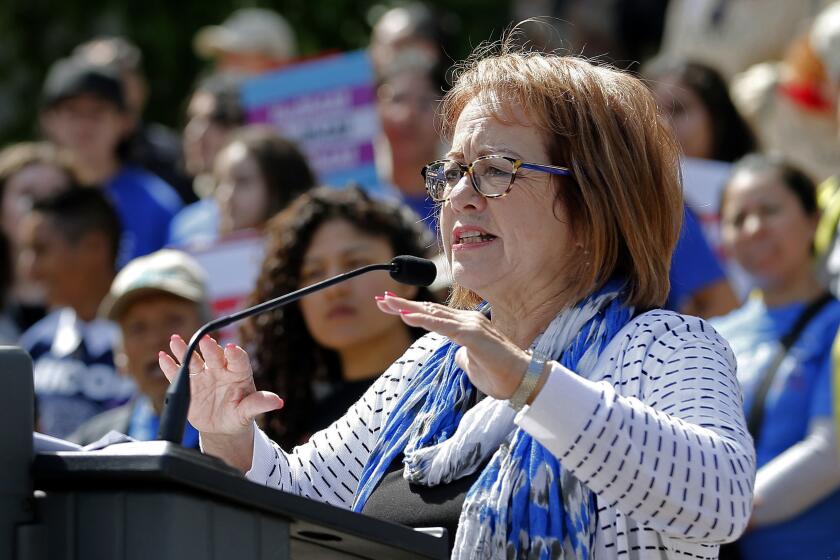San Diego adding extra winter homeless beds
San Diego will temporarily increase its number of emergency shelter beds from 350 to 600 this winter during El Nino rainstorms and other inclement weather, city officials said Monday.
The announcement alleviates concerns raised by homeless advocates that the city’s switch this year to a permanent downtown shelter would limit its capacity to handle spikes in demand caused by bad weather.
The 600 emergency shelter beds under the new model are about 25 percent more than the roughly 475 that were typically available in two large tents the city used for decades as seasonal homeless shelters before switching to a year-round, indoor facility this summer.
“We don’t know how many stormy days we have due to El Nino coming this winter, but we know we need to be well-prepared to take care of our homeless San Diegans,” City Councilman Todd Gloria said at a news conference at the permanent shelter, which is operated by Father Joe’s Villages. “San Diego will be ready.”
City officials also said early results from switching to a permanent shelter, which provides greater access to social services and job training, have been impressive.
Twice as many homeless people have transitioned into long-term housing compared to results from the temporary tents — 52 percent versus 26 percent — and the permanent shelter is on pace to serve 2,700 people during its first year of operation compared to the 1,200 the tents typically served.
“We are now able to provide more effective and compassionate care for homeless individuals and veterans by giving them a safe and clean environment to live, and supportive services to help them get back on their feet,” Mayor Kevin Faulconer said.
Delores Diaz, executive director of the Regional Task Force on the Homeless, said the numbers are impressive but not shocking.
“They are very skilled at Father Joe’s,” she said. “They know how to do the assessments and they have the resources at their disposal and the ability to connect to other resources.”
While the permanent shelter increases the city’s annual costs from $1.2 million to nearly $1.8 million, officials said taxpayers are getting more for their money because each night someone is housed now costs $13.78 instead of the $29.10 it had cost in the tents.
The switch to a permanent facility is part of a broader change in homeless philosophy called “housing first” that San Diego has embraced in recent years based on the model’s success in other cities.
“This year marked a major shift in how we address homelessness in San Diego,” said Faulconer, hailing the substance abuse counseling and preventative health care that the housing-first model allows. “Everyone deserves a roof over their head and the opportunity for a better life and that’s what we’re providing now on a year-round basis.”
RELATED: San Diego has moved up in the homeless rankings
Despite the new approach and additional resources, San Diego climbed from fifth to fourth in the nation for number of homeless people in recent data released by the U.S. Housing and Urban Development Department covering 2014. San Diego had 8,742 homeless people last year, behind only New York, Los Angeles and Seattle.
In addition, last winter’s annual homeless count by the Regional Task Force on the Homeless found more than 800 homeless people were living unsheltered on the streets of downtown San Diego, an increase of about 26 percent over the previous year.
City officials say such data shows how much more work needs to be done, with a primary hurdle being the need to add more affordable permanent housing for the homeless.
The 250 bad-weather emergency beds announced on Monday won’t come with the same kind of access to social services as Faulconer has touted, but city officials said they will get people off the streets and out of canyons during the heavy rains.
During storms or on extremely cold nights, Father Joe’s will place 200 cots in the dining room of the city’s permanent homeless shelter at 15th Street and Imperial Avenue and another 50 cots at the city’s Neil Good Day Center a few blocks away.
The two tents — a 200-bed shelter for adults on 16th Street and a 150-bed shelter for veterans on Pacific Highway in the Midway District — typically had about 125 additional emergency beds total on bad-weather nights, said Bob McElroy, who ran the 200-bed shelter as chief executive of the nonprofit Alpha Project.
“That’s amazing because 600 is a huge amount,” said McElroy, estimating that his shelter added about 75 beds on stormy nights and that the veterans shelter typically added about 50.
That increased the number of available beds during storms from 350 to 475, making the 600 San Diego has promised this winter about a 25 percent increase.
Councilman Gloria and Deacon Jim Vargas, chief executive at Father Joe’s, said they were optimistic churches and nonprofits would supply additional emergency beds during storms. But no details were available Monday.
“We’re working with different faith communities and different organizations,” Vargas said. “I haven’t sized up how many more beds there might be because we don’t know how many can be accommodated at each location.”
McElroy, however, said many of those additional beds might go empty.
“You can have all the cots you want, but you have to have a population willing to come in and take those cots,” he said.
Many homeless people would prefer to remain in their makeshift encampments or sleeping on the street, even during terrible weather, based on fears their belongings will be stolen or confiscated by authorities, he said.
“They know it’s temporary,” he said. “They’re not willing to leave their belongings to come in for one or two nights, and then have to go back out and rebuild or whatever.”
McElroy declined to comment on the preliminary statistics from the permanent shelter, saying he’s struggled to get data about their housing placement success since the tents closed.
Before the City Council approved the switch in March, critics said it wouldn’t increase the number of shelter beds because the 350 at Father Joe’s were already full, forcing the nonprofit to send some homeless people on their way to make room for people from the tents.
Vargas said Monday that there’s still a long waiting list for beds. but he’s been pleased with the early success of the permanent shelter.
Get Essential San Diego, weekday mornings
Get top headlines from the Union-Tribune in your inbox weekday mornings, including top news, local, sports, business, entertainment and opinion.
You may occasionally receive promotional content from the San Diego Union-Tribune.

